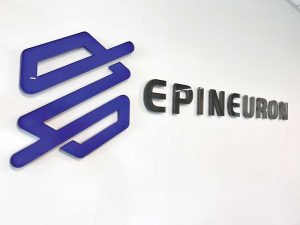SMC: What type of signage does your shop primarily install?
EF: We do a wide range of signs that utilize 3D, or what are known as dimensional signs. We love trying out different thicknesses and materials. We can be creative, especially when the customer gives us the challenge of coming up with the design.
We specialize in 3D reception signs, which prominently display company logos. These can be lit or unlit, but they never compromise on the details.
SMC: What type of projects have you been working on recently?
EF: We’ve been busy with a lot of storefront signs, reception signs with channel letters, and acrylic laser-cut signs. We’ve also been printing and manufacturing signs and doing installations for a company in Australia called KUBE Design Services since 2019. They needed a company that would give them undivided, in-person attention; have the skills to understand what they required; and implement the production and installation of the signs. More importantly, they needed a company that would be committed to their timelines and deadlines.
SMC: How much of the sign installation process is handled in-house?
EF: About half the signs we offer are done in-house. Some of the elements we outsource are the larger, systematically fabricated ones, such as computer numerical control (CNC) cut signs and channel letters. At our shop, we do the laser-cut and engraved signs, in combination with digital printing.
SMC: What tools and equipment do you currently use to complete your projects?
EF: We have a wide-format printer that can print on most vinyl and banner materials.
We also have two laser machines: one for engraving and another for cutting acrylic and other materials. Additionally, we have a laminator and a lightbox table to help with alignment when mounting vinyl to substrates.
SMC: What are some of the steps involved in your planning process?
EF: When we first speak with a customer, we ask what type of sign they need. We also ask for the logo, images, or text they want on the sign, as well as a picture of the storefront or the wall where it will be going. Next, we send them mock-ups showing our suggestions for the design and sample images of previous signs we have made, to give them an idea of how it will look. Most often, this verifies to the customer that we know what we’re doing. As we discuss the options for their sign, we also give them different scenarios with corresponding price ranges.

Over the years, Florentino has gained an affinity for laser-cut acrylic projects and seen the vast varieties of designs he can create with the material.
SMC: How is technology changing the way you run your business?
EF: Technology is changing, which is why we stay up to date with new features and utilize online tutorials and other specialty videos. Since today’s customers are well-versed in technology, it’s also easier to ask them for what we need, including “vectors” for their projects. Usually, they have an idea of how to use basic design apps, and sometimes I can get the files I need straight from one of the popular graphic design platforms.
SMC: What is the key to staying successful in this industry?
EF: One of our key strategies for staying successful is our online presence. We’re active on social media, and we also focus on search engine optimization (SEO) on our website. Additionally, our business profile is frequently updated to ensure it’s accurate. This has kept us top of mind when people in the area search for signs for their businesses.
SMC: What are your future plans for the growth of your business?
EF: My plan is for Signs Den to become a franchise, with a model that can be expanded using the principles of good taste, knowledge, and experience. With what we have established, I’m confident growing our sales is just a matter of spending more on social media content
and advertising.






